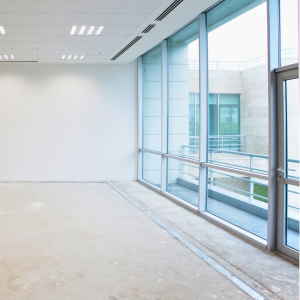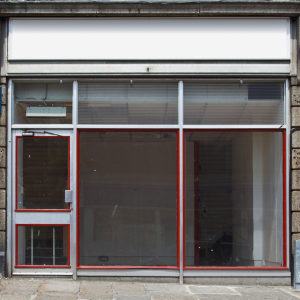|
Removing squatters from commercial property
Despite increasing rents, the proportion of vacant commercial property remains above pre-pandemic levels. Of course, the picture depends on the sector, with far more vacant offices and retail premises than, say, warehouses or manufacturing units. And as you might expect, as vacancy rates increase, so does adverse occupation. So, what can landlords do? Here’s my introduction to removing squatters from commercial property.
Squatters rights commercial property
 In recent years, a significant reason for the increase in squatting in commercial premises is the Legal Aid, Sentencing and Punishment of Offenders Act 2012 (“LASPO”). LASPO made squatting in residential property a criminal offence, potentially punishable by up to six months in prison, a £5,000 fine, or both. Before LASPO, squatting was a purely civil matter and remains so for commercial property.
In recent years, a significant reason for the increase in squatting in commercial premises is the Legal Aid, Sentencing and Punishment of Offenders Act 2012 (“LASPO”). LASPO made squatting in residential property a criminal offence, potentially punishable by up to six months in prison, a £5,000 fine, or both. Before LASPO, squatting was a purely civil matter and remains so for commercial property.
In addition to the lack of criminal sanction, squatters are often attracted to commercial property by its relatively good condition compared to many vacant residential properties.
Why you cannot just remove squatters
Seeking to remove squatters forcibly is a criminal offence under Section 6 of the Criminal Law Act 1977 (“the Act”). The Act says that a landlord seeking to re-enter premises cannot use or threaten violence to gain entry if there are individuals present opposing the entry.
Preventing or discouraging squatters from gaining entry
If you’re reading this, the chances are that it’s a little late for preventative action. However, it’s important to note that not taking sufficient steps to secure vacant premises risks your insurance cover.
Removing squatters from commercial property
 The first thing to appreciate is that many squatters’ groups are very sophisticated and well-organised. News of empty premises, particularly those in good condition, spreads fast, often over social media. Others are encouraged to join them for ‘strength in numbers’. So, landlords must act quickly.
The first thing to appreciate is that many squatters’ groups are very sophisticated and well-organised. News of empty premises, particularly those in good condition, spreads fast, often over social media. Others are encouraged to join them for ‘strength in numbers’. So, landlords must act quickly.
As a general rule, the more squatters and the longer the period of occupation, the greater the risk of serious damage caused by their occupation.
The only realistic option for removing squatters from commercial property is applying to the Court for a possession order. There are two ways:
- Applying for a Summary Possession Order (SPO). Usually, the application is made to the County Court. The Court typically lists the matter quickly, often within five to seven days of issuing the application.
- Applying for an Interim Possession Order (IPO). As with an SPO, the application is usually made to the County Court. The aim is to obtain a possession order as quickly as possible as an interim measure, with a full hearing at a later date. There are not that many requirements for an IPO, but you must make your application within 28 days of first becoming aware of the occupation.
Whether you apply for an SPO or an IPO generally depends on a number of factors, including:
- the urgency of gaining possession;
- the amount of time since the squatters gained entry; and
- whether or not possession is the only remedy sought.
As soon as you become aware of squatters’ presence, contact me urgently on 01225 462871 to discuss your next steps.

